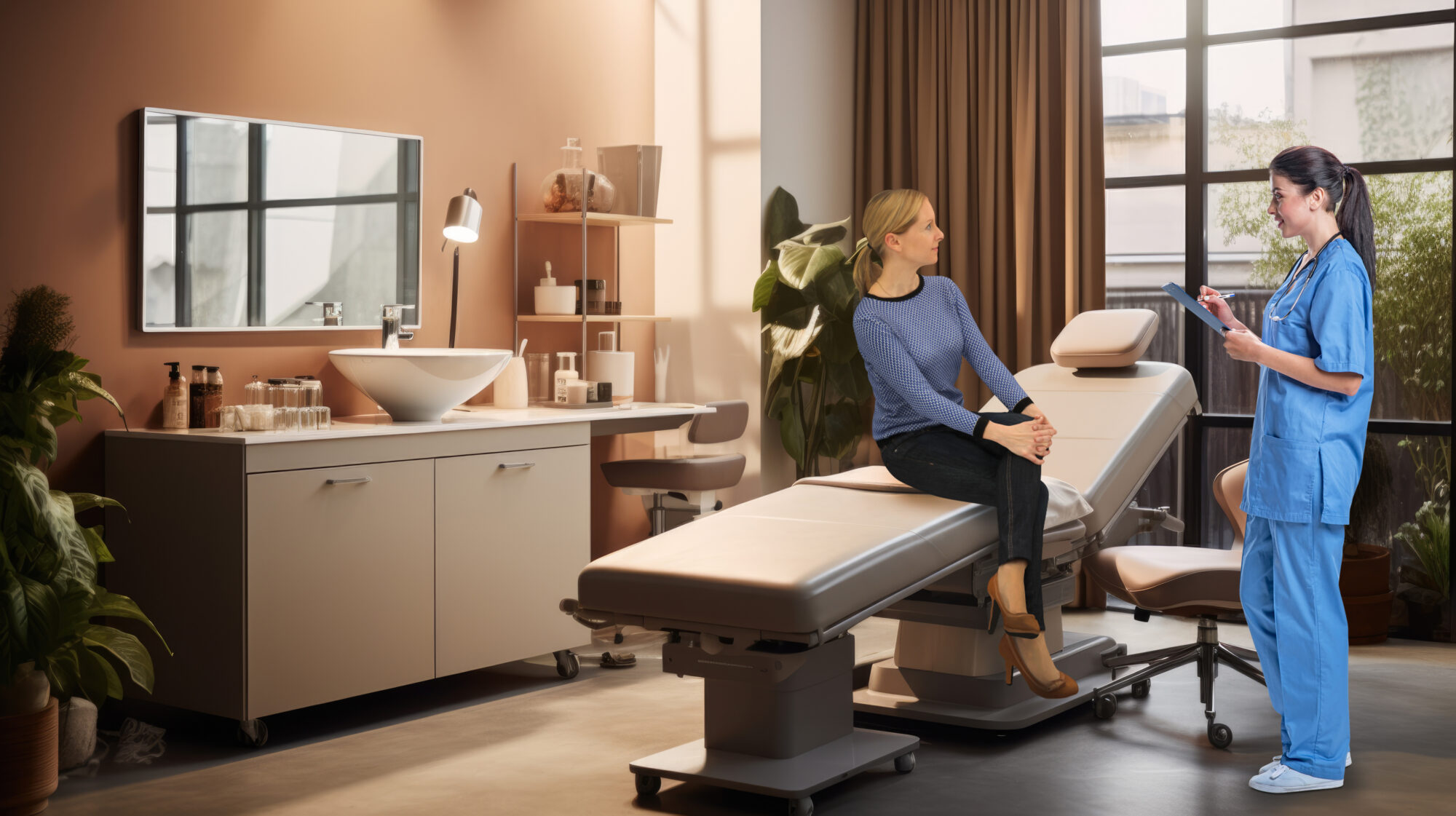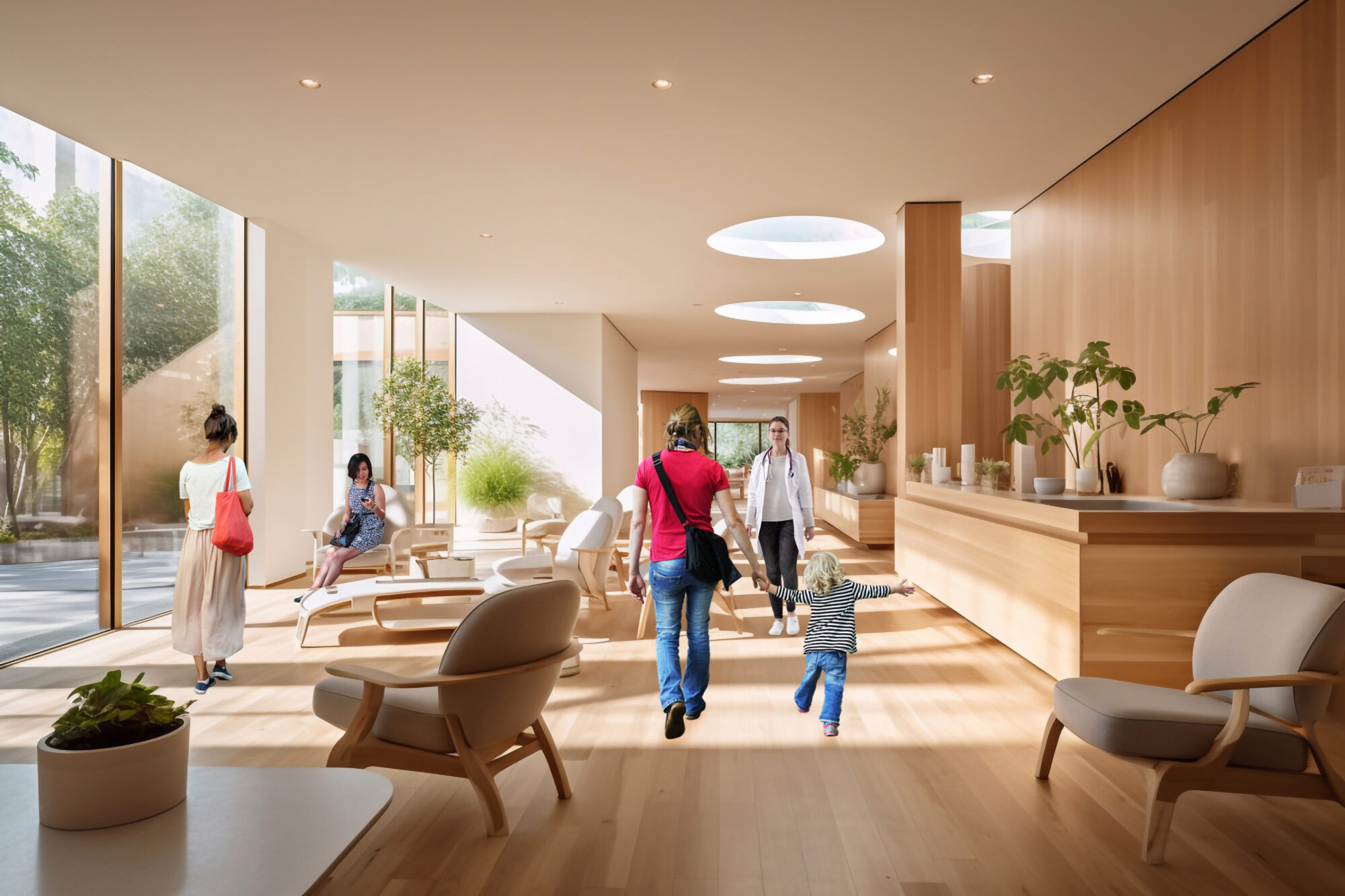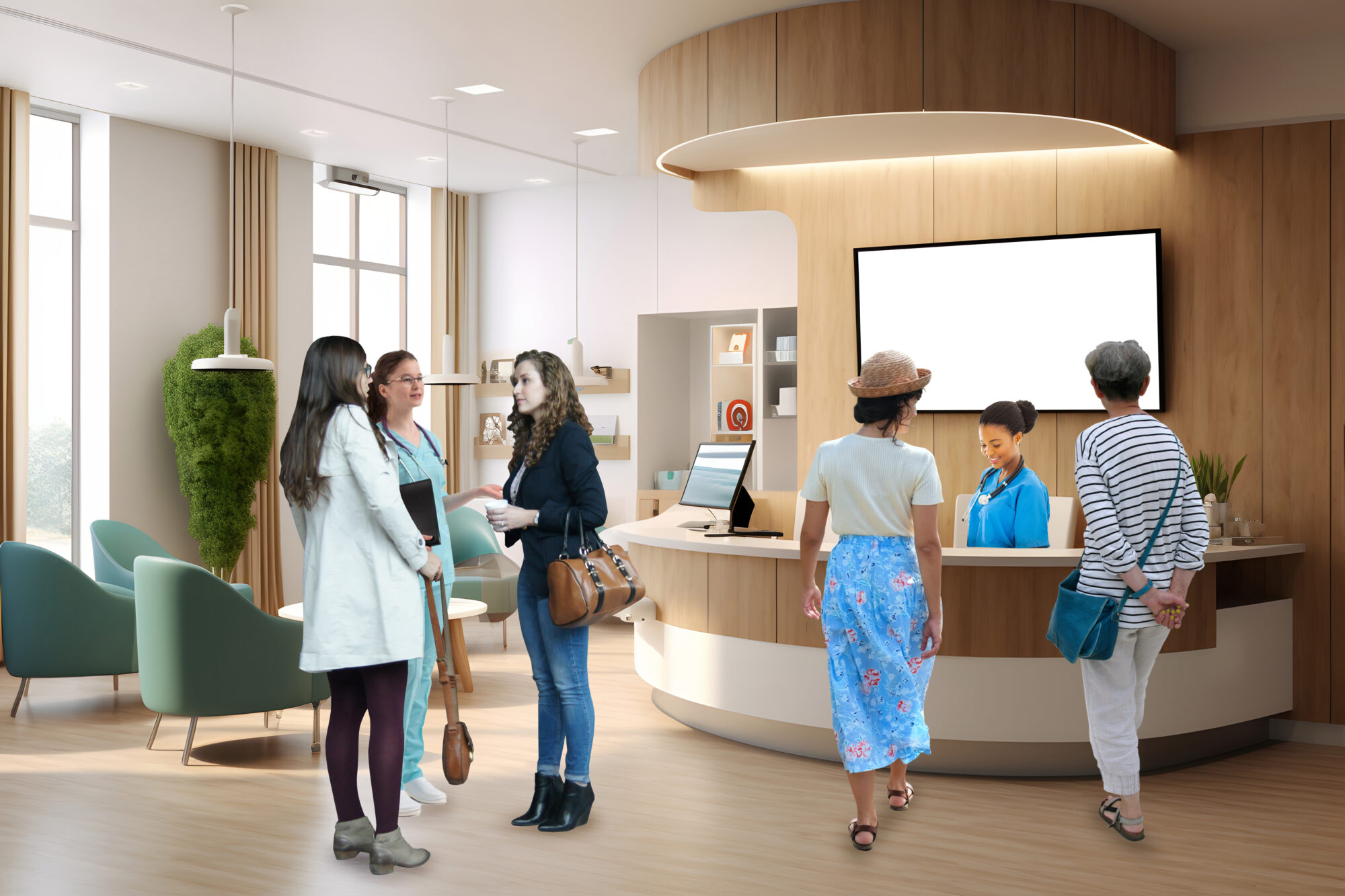Designing Healthcare Facilities with Women in Mind
By Mariah Gresko
A significant paradigm shift is currently taking shape in the realm of healthcare. This evolution is characterized by a focused emphasis on designing healthcare facilities with a woman-centric approach. This pivot is instrumental in fostering inclusivity and specifically addresses the unique health requirements that women encounter at different stages of their lives. EAPC Architects Engineers (EAPC), a multidisciplinary AE firm with designers, architects, and engineers all in-house, is leading the way with its expertise in healthcare design across its 10 offices. This comprehensive discussion highlights various elements and expert insights that substantiate the growing necessity of women-centric healthcare facility design.
A Women-Centered Approach to Healthcare
Recent research has consistently brought to light a substantial issue within the healthcare sector: the pronounced disparities faced by women. These disparities are evident in multiple aspects, such as underrepresentation in clinical trials, absence of dedicated female-centric health programs, and environments that do not fully encompass the broad spectrum of women’s experiences and concerns. The persistent gender gap in healthcare is a structural imbalance that significantly impedes the progression towards truly personalized and adequate medical care.
Dr. Sarah Miller, a leading expert in healthcare architecture, emphasizes the critical nature of this issue: “Designing healthcare facilities with women in mind is an indispensable necessity. It promotes inclusivity and addresses the distinct health requirements that women encounter at diverse stages of their lives.” Miller’s statement illuminates the urgency for a profound paradigm shift wherein healthcare environments are meticulously crafted with a deep understanding of women’s diverse health stories.

Tailoring Spaces for Women’s Health
The endeavor to genuinely embody a nurturing and inclusive space necessitates that healthcare facilities surpass conventional design models. This means embracing a broader array of considerations such as creating environments that cater to women’s psychological comfort, physical safety, and privacy. Furthermore, it entails the formulation of educational programs and resources that are specifically geared towards women’s health needs, fostering a sense of empathy and respect.
Designing spaces that effectively cater to women’s health needs is integral to contemporary healthcare design. Specialized zones for services such as gynecology, breast cancer screening, and fertility treatments form the bedrock of this approach. Beyond aesthetics, the design should prioritize privacy and tranquility through thoughtful spatial planning, thus significantly enhancing overall well-being. The overarching goal is to establish sanctuaries where women feel genuinely valued and cared for.
Dr. Anita Richardson, an authority in women’s health, advocates for this approach: “Crafting spaces that cater to the varied and distinct health needs of women results not only in superior health outcomes but also instills a deep sense of dignity and respect.” The designed spaces should resonate with every woman who seeks care, from rooms that enable quiet contemplation to artworks that celebrate the myriad aspects of womanhood.

Approaching Interior Design with a Women-Centric Focus
Transitioning to the interior design aspect, the selection of materials plays an essential role in defining a healthcare facility’s atmosphere. Opting for tranquil color schemes and soft textures can establish a nurturing ambiance. For instance, a study from the University of Warwick observed elevated levels of anxiety and stress among women during hospital visits. To alleviate this, elements such as comfortable furniture and soothing colors are vital in crafting a more inviting environment.
Furnishings that Foster Comfort
When deliberating healthcare facility design, incorporating ergonomic innovations is crucial. Features like supportive seating, adjustable exam tables, and strategically placed handrails transform these spaces into havens of safety and comfort.

Lighting – A Cornerstone to Enhancing Experience
Natural light holds significant sway in uplifting the healthcare experience. Beyond simple illumination, it crafts a comforting and serene atmosphere that is instrumental in reducing stress and improving mood.
Art and Aesthetics – A Healing Touch
Art plays a transformative role in healthcare settings. Insightfully chosen art pieces that resonate with the diverse narratives of femininity can serve as powerful catalysts in fostering a healing environment.
Engaging Women in the Design Process
In the pursuit to establish healthcare facilities that deeply resonate with women, their active participation in the design process is crucial. Architect Jane Smith notes that incorporating women’s perspectives early on can be pivotal in crafting spaces that genuinely align with their needs.
Embracing a women-focused approach in designing healthcare facilities is imperative for healthcare progress. This endeavor, rooted in empathy and respect, promises mental well-being and dignified experiences. Close collaboration between architects, designers, and engineers, including the seasoned experts at EAPC, is necessary to make this vision a reality, aiming to offer women an environment that recognizes and celebrates their diverse needs and experiences. By doing so, we chart a path to a future where healthcare overcomes obstacles, establishing a genuinely compassionate space that comprehends and respects the complexities of women’s health.
